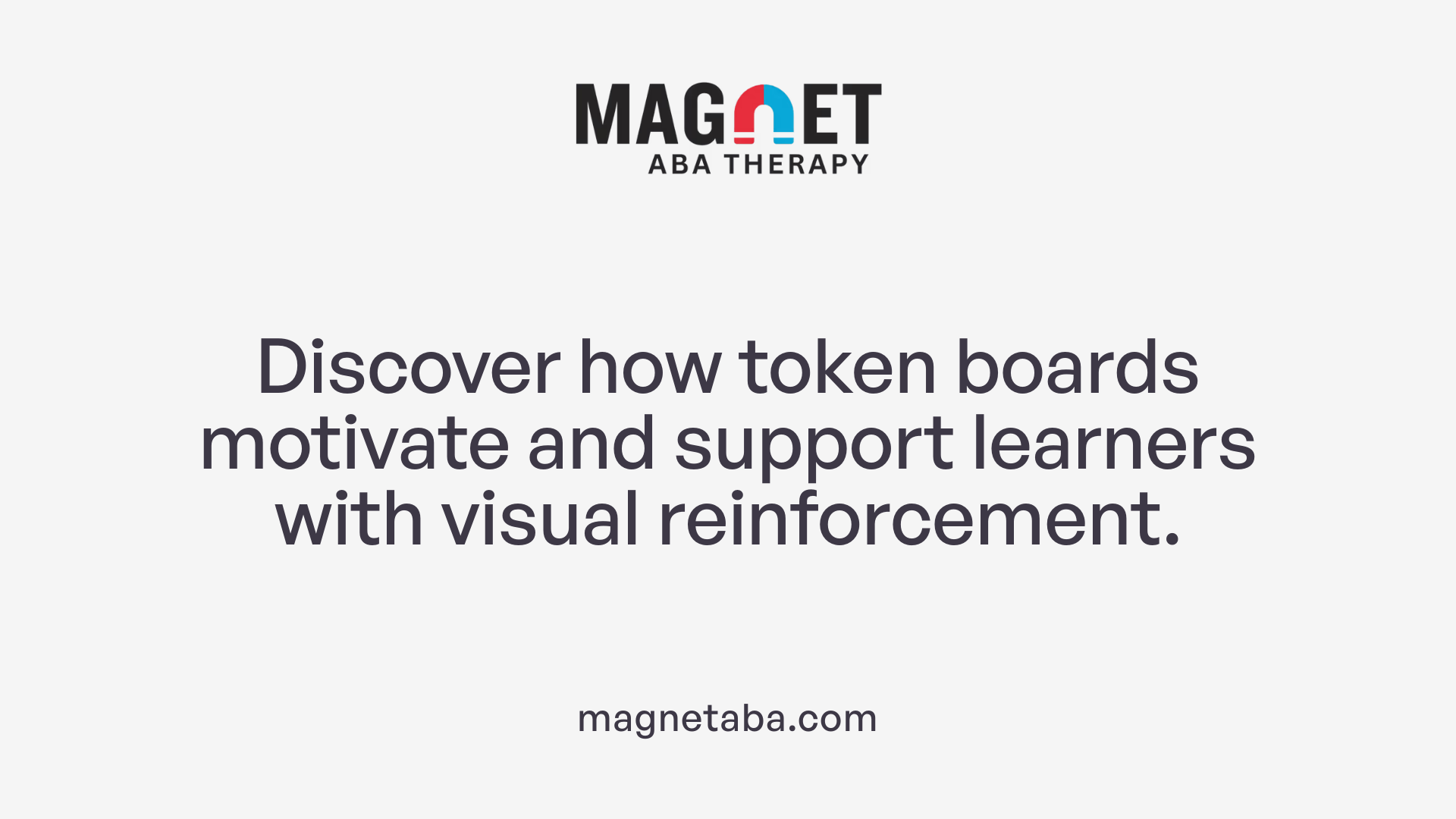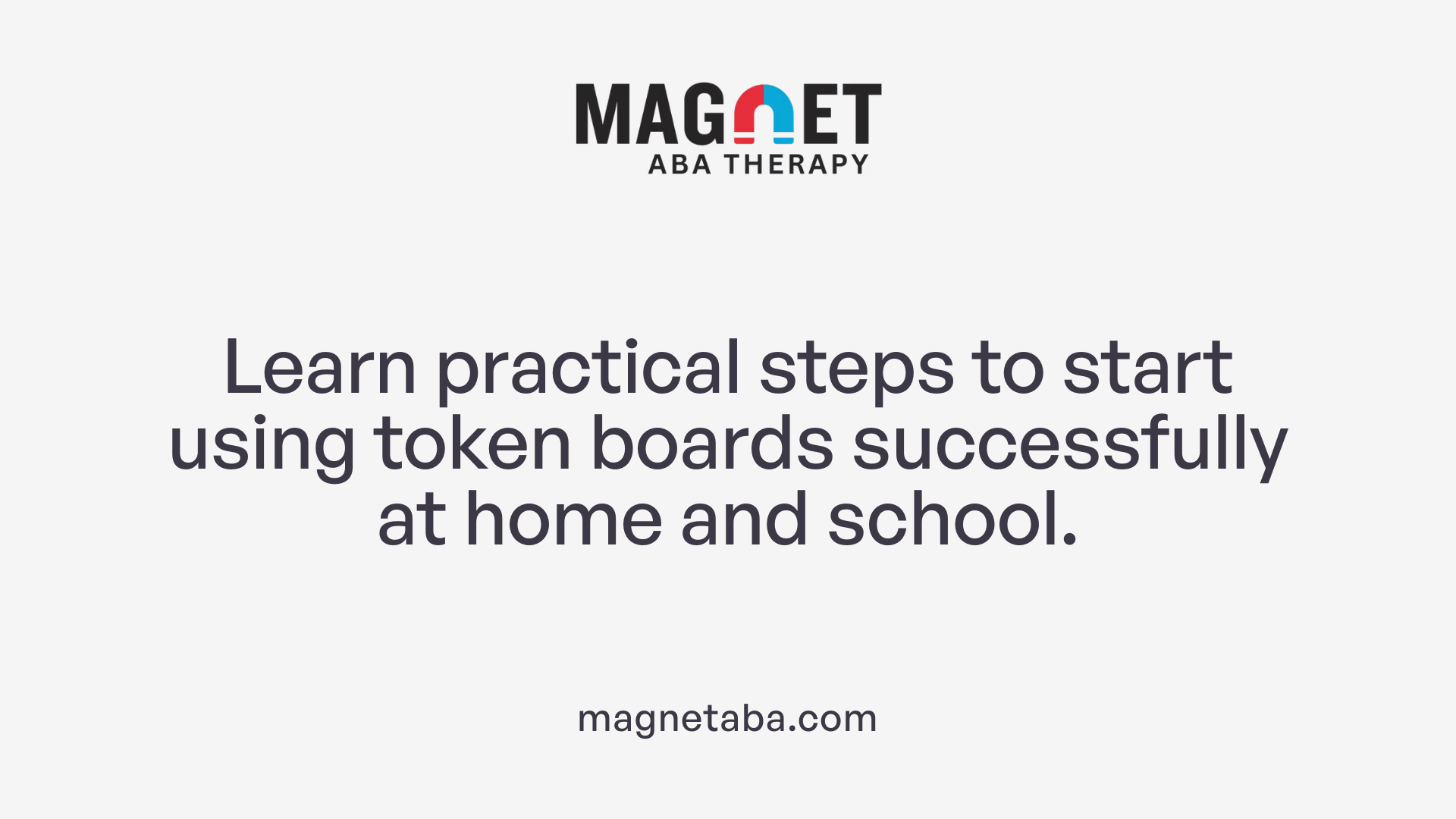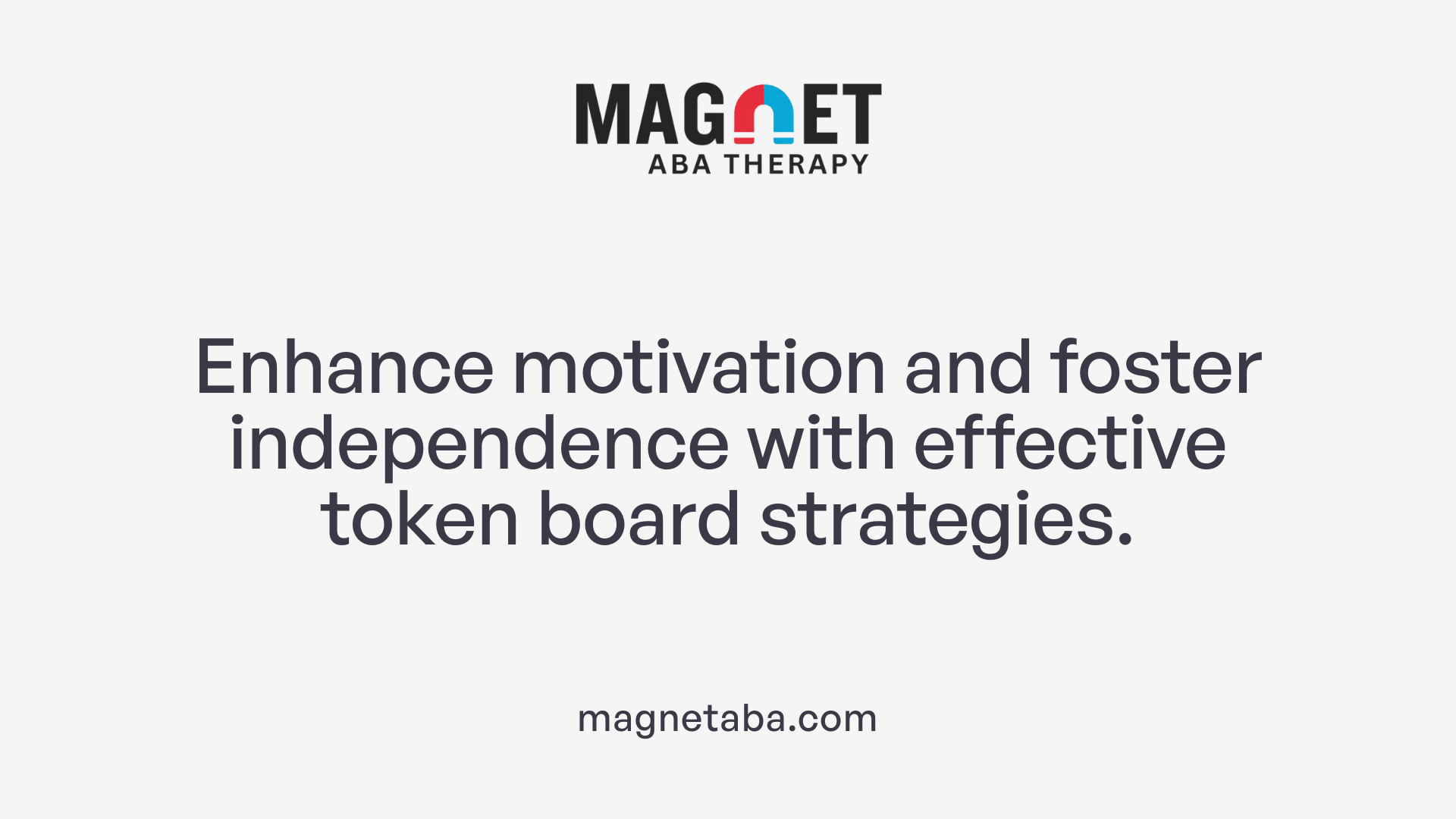Introduction to Token Boards in Behavior Support
Token boards are a highly effective visual and tangible reinforcement tool used within applied behavior analysis (ABA) and broader behavioral support strategies. They serve as systematic visual markers that motivate individuals, particularly children with developmental disabilities, to engage in desired behaviors, complete tasks, and develop new skills. Their versatility allows implementation across various settings, including homes, classrooms, and therapeutic environments. Understanding their purpose and proper application can significantly enhance behavior management and skill acquisition.
Understanding the Purpose and Benefits of Token Boards

What is the purpose of using token boards in behavior support?
Token boards are a widely used tool in behavior management, especially within applied behavior analysis (ABA). Their primary purpose is to provide a visual and tangible way to reinforce positive behaviors and task completion. By earning tokens—such as stickers, stars, or smiley faces—individuals can see their progress in real-time, which helps build motivation and confidence.
The system works by pairing tokens with desirable activities or items, transforming them into conditioned reinforcers. For example, a child might earn a token for completing homework or following a classroom rule. When the token board is filled, the child exchanges the tokens for a preferred reward, encouraging continued effort.
Token boards are especially effective in supporting individuals with developmental needs, providing a clear structure that reduces confusion and promotes understanding of behavioral expectations. They also foster independence by helping learners track their behavior over time, recognizing how close they are to earning their reinforcement.
Beyond immediate motivation, token boards support a gradual decrease in external reinforcement, helping learners develop internal motivation and self-control. Customizable to suit individual age and ability levels, they are a versatile and evidence-based tool in behavior support strategies.
Implementing Token Boards Effectively: Practical Steps and Strategies

What are practical steps for starting to use token boards at home or in educational environments?
Getting started with token boards involves several straightforward steps that can make the system both effective and engaging. First, clearly identify the target behaviors you want to reinforce, such as completing homework, following instructions, or staying on task. Next, design a visual and tangible token system that appeals to your learner — this could include colorful tokens, stickers, or customized items.
Choose appropriate backup reinforcers that are motivating for the learner, such as a favorite snack, activity, or privilege. Pair these reinforcers with tokens through consistent reinforcement, meaning tokens are earned immediately when the target behavior occurs. Develop a simple exchange process where a certain number of tokens results in the chosen reward.
Introduce the token board gradually, starting with a nearly full board during initial lessons to help the learner make the positive connection between their behavior and earning tokens. Use instructional techniques like backward chaining—focusing first on completing the entire sequence—so the learner can experience success early.
Consistently deliver tokens immediately after the desired behavior, reinforcing the behavior effectively. As the learner gains proficiency, consider fading the system by gradually increasing the number of tokens needed for reinforcement, eventually shifting toward more natural motivators.
Regularly monitor the system’s effectiveness, seeking feedback from the learner and making adjustments to keep the process engaging and clear. This might include changing reinforcers, adjusting the visual layout, or simplifying the criteria to reinforce. These steps create a strong foundation for using token boards to promote positive behavior and skill development.
Supporting Positive Behavior and Motivation with Token Boards
 Token boards are an effective system that combines visual and tangible reinforcement to promote positive behaviors and motivation in learners of all ages. They provide a clear and consistent way for individuals to see their progress, which enhances feelings of achievement and encourages continued effort.
Token boards are an effective system that combines visual and tangible reinforcement to promote positive behaviors and motivation in learners of all ages. They provide a clear and consistent way for individuals to see their progress, which enhances feelings of achievement and encourages continued effort.
One of the main benefits of token boards is their ability to deliver immediate reinforcement. As learners complete targeted behaviors or tasks, they earn tokens right away, reinforcing the connection between their actions and positive outcomes. Once enough tokens are accumulated on the board, a preferred reward or reinforcer is provided, which can range from a small item to a preferred activity.
Customization is a crucial feature of token boards. They can be tailored to meet individual needs by adjusting the complexity of the system, such as changing the number of tokens required for a reward or modifying the types of tokens and associated reinforcers. This flexibility helps maintain motivation over time and ensures that the system remains engaging and appropriate for the learner.
Beyond immediate motivation, token boards support the development of skills and foster independence. Learners become more aware of their behaviors, learn to self-regulate, and gradually rely less on external rewards as intrinsic motivation increases. Additionally, with consistent use, token boards can help reduce anxiety around learning and task completion by providing a predictable framework for reinforcement.
Overall, token boards serve as a valuable tool for reinforcing positive behaviors, promoting persistence, and encouraging learners to engage actively with their goals. By visualizing progress and providing immediate, customized reinforcement, they help create a motivating environment that nurtures skill growth and independence.
Token Boards in Educational Settings and ABA Therapy
How can token boards be applied in educational and instructional settings?
Token boards are versatile tools that can be effectively integrated into classrooms and therapy environments to promote positive behaviors and reinforce learning goals. In these settings, they serve as visual and tangible systems where students earn tokens—such as stars, smiley faces, or stickers—for completing tasks, displaying appropriate social behaviors, or reaching specific milestones.
These tokens act as secondary reinforcers and are subsequently exchanged for backup reinforcers, which might include preferred activities, treats, or privileges. This visual process not only motivates students but also helps them clearly see their progress, increasing engagement and reducing frustration.
Implementation requires careful planning. Teachers and therapists select age-appropriate and motivating reinforcers, ensure the visual appeal of the token board, and personalize the system based on individual needs. The process involves starting with simple, achievable goals, and gradually increasing difficulty or complexity through strategies like backward chaining.
Behavior contracts and fading strategies are employed over time to promote independence. For example, a student may initially earn tokens for small tasks like completing homework, then gradually be encouraged to perform more complex skills without constant reinforcement. This systematic approach helps build confidence and self-regulation.
Overall, token boards foster a structured, positive, and motivating learning environment. They are especially beneficial for students with autism or developmental disabilities by providing consistency, reducing anxiety around learning challenges, and encouraging goal-oriented behaviors.
Methodologies for Implementation and Maintenance of Token Boards

How should target behaviors be designed and visual systems be created?
Effective implementation begins with clearly defining specific, measurable target behaviors that are meaningful and achievable for the learner. The visual system, or the token board, should be simple, visually appealing, and tailored to the child's preferences and developmental level. For example, using colorful stickers, stars, or smiley faces can increase motivation. It is important to incorporate visual cues that clearly indicate progress, such as spaces for tokens or a visible goal line.
How can educators and caregivers be trained to use token boards?
Training involves teaching all involved adults to understand the reinforcement process thoroughly. This includes how to define target behaviors, how to deliver tokens immediately following the desired behavior, and how to handle exchanges for reinforcers. Consistency is crucial; all team members should apply the same rules for earning and exchanging tokens to avoid confusion. Modeling effective techniques, providing clear instructions, and practicing with feedback can improve fidelity.
What is the best way to monitor and adjust reinforcement schedules?
Regular observation and data collection are vital. Tracking how often the learner earns tokens and how they respond to reinforcement helps determine if the schedule is effective. Reinforcement schedules can be adjusted by increasing or decreasing the number of tokens needed to exchange for reinforcement (schedule thinning) over time to promote independence. Adjustments should be gradual to avoid frustration and to maintain motivation.
How does fading and transferring control of tokens support behavior maintenance?
Fading involves gradually reducing the reliance on tangible tokens and shifting toward natural reinforcement, such as social praise or increased independence. Transferring control means gradually letting the child take responsibility for earning and exchanging tokens, fostering independence. Techniques include moving from structured, teacher-managed systems to more child-led routines, and slowly removing prompts. This process helps sustain behavior once the token system is phased out.
Why is data collection and behavior analysis important?
Collecting data on token earning, exchanges, and behavior frequency allows for assessment of the system's effectiveness. Analyzing this data helps identify patterns, determine whether behaviors are increasing or plateauing, and inform necessary adjustments. This systematic approach ensures that the intervention remains evidence-based and tailored to the learner’s evolving needs.
| Step | Action | Details | Benefits |
|---|---|---|---|
| Designing | Set behaviors & visual system | Tailor visuals to learner; ensure clarity | Increased motivation & understanding |
| Training | Educator/caregiver training | Practice consistent rules & delivery | Fidelity & effectiveness |
| Monitoring | Data collection & review | Track progress & adjust schedules | Long-term success & generalization |
| Fading | Gradual reduction of tokens & prompts | Promote independence | Behavior maintenance |
| Data Analysis | Evaluate progress | Make informed adjustments | Enhances intervention quality |
Implementing a well-structured token board requires thoughtful planning, consistent application, and ongoing evaluation. When used effectively, it can foster behavioral improvements across diverse settings and age groups.
Final Thoughts on Using Token Boards for Behavior Support
Token boards are a proven and versatile tool in promoting positive behaviors, supporting motivation, and fostering skill development across various settings. Their visual and tangible nature offers immediate feedback and organization, making them especially effective for learners with autism and developmental disabilities. For optimal results, implement them thoughtfully—start simple, personalize to individual needs, maintain consistency, and gradually fade reliance on external reinforcement. When used appropriately, token boards can significantly enhance behavior interventions, motivate learners, and promote independence, ultimately contributing to more positive, structured, and supportive environments.
References
- Token Board
- How to Implement & Use Token Boards
- Common Practices used to Establish and Implement Token ...
- Using the Token Board
- Unlocking Motivation with Token Boards: A Simple ABA ...
- Token Board - tnedu.gov
- The World's Easiest Token System for Behavior Management
- How a token board motivated my students who learn and ...
- Token Board - 10 Star
- Token Board












